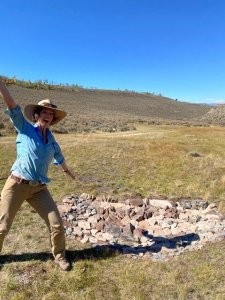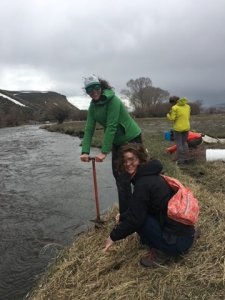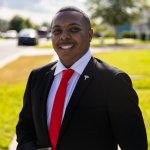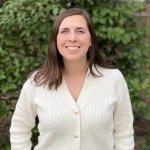Cheryl Cwelich
Originally from Centennial, Colorado, Cheryl Cwelich (she/her) now lives and works in Gunnison, Colorado, on Ute lands.
Cheryl joined River Network in 2024. As Healthy Rivers Program Manager, Cheryl helps advance the health of rivers in Colorado, and other upper basin states, with the Colorado River Basin team. This includes building capacity of watershed coalitions and communities through the Stream Management Plan (SMP) Peer Learning Network and assisting with scaling up integrated river management across Colorado’s Western Slope.
Cheryl’s experience as a Colorado Parks & Wildlife Park Ranger and longtime Monarch Ski Patroller on the headwaters of the Arkansas River inspired her to go back to school for water resource management. After achieving her undergraduate degree in Environment & Sustainability with an emphasis in Water Policy & Resilience, and a minor in Recreation & Outdoor Education, Summa Cum Laude, from Western Colorado University, Cheryl worked in land and river conservation. Her greatest joy is working on wet meadow and riparian restoration projects that build resilience for watersheds, wildlife and people. Outside of work, Cheryl is playing outside! She loves boating in all its forms, mountain biking, and skiing, though hiking will always hold a special place in her heart… and gardening. She also enjoys indoor pastimes like baking, doing art (painting and pottery), puzzles, along with making music with friends and family.
Which River Network value most speaks to you?
This is tough for me because the word “Balance” is one that I use numerous times daily – to see various perspectives, needs, and wants – and to hold them in planning, problem-solving, and decision-making. However, the word “Integrity” has such a magical ring to it – calling us to be our best selves, to bring our best to the table, to be clear and honest and true – like good water quality… yes, I’ll take some wine with my cheese ^_^
 What motivates you to go to work everyday?
What motivates you to go to work everyday?
Climate change isn’t just a storyline anymore, it is here. It isn’t something we talk about in classrooms or on the news as something that is going to happen, someday – we are actually experiencing it. In Colorado, over 50% of wetland areas have been lost or impacted. This is aridification, the literal drying out of land. For me, nothing could be more important than preserving, protecting and restoring the wetland areas we have left – an ecosystem that supports wildlife, livestock, and communities.
What called you to work in water?
While working as a Park Ranger for Colorado Parks & Wildlife in the Arkansas Headwaters Recreation Area, I learned about “Buy and Dry” and trans-mountain diversions for the first time, and I saw the delights of recreation and its pressure. This, with the effect of extreme temperatures, drought, and climate changes on our water resources and its uses, were a stark realization for me that water warriors were needed and I wanted to be one of them.
Why is equity, diversity, and inclusion (EDI) important in your work?
If we do not consider equity, diversity and inclusion in our work – in ANY work, we are not dealing with the whole of our reality. If we want to develop solutions that work, that have long-term success – we must have everyone at the table, listen to everyone at the table and make decision together that help everyone at the table.
What was your earliest memory around water?
When I was still wee, my family used to visit Gunnison to fish and hike with my grandparents. I was always splashing around in the water, the little side creeks and streams… at one point, I even tried to create a “creek” in our backyard by digging out parts of the yard, much to my father’s chagrin.

Streambank stabilization with willows on Tomichi Creek (Gunnison County, CO).
What was the most inspiring aspect of your work over the past year?
The impacts from climate change on communities around the world are obvious, island nations sinking under water, other extreme storm flooding, drought and famine – extreme excess and extreme lack of water. Those most impacted are the most vulnerable. In the United States, we have communities – urban, rural, and tribal – that do not have access to clean drinking water or ways to protect their watersheds. These are the communities that I have worked with in the last year on watershed restoration, and look forward to continue to work with through helping with capacity building, resource access, and technical support.
If you didn’t work in water or conservation, what would you be doing?
In an alternate reality, I am working as a researcher on alpine plants and pollinators, particularly in the orchid family.
How do you think the conservation community can make the biggest impact?
To me, it is a multi-pronged approach.
1) Policy & Decision Making. Help direct and create policy that protects water and thereby protects people, wildlife and the land – everything from national level decision-making down to a local level with things like land use planning;
2) Planning & Research. Bring everyone to the table to problem-solve; provide or create learning opportunities to inform decision-making, and;
3) Do the work! Whether it’s through conservation easements, fencing projects or restoration work – it’s getting it done… This is what gives me hope about the future, each of us doing our part.
How do you recharge outside of work?
Being outside, doing yoga, and sitting by a river.







